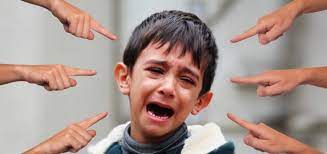
When it comes to raising children, parents are faced with many difficult decisions. One of the most important questions is: what and when should children learn about sex and sexuality? It is a complex topic, but it is essential for parents to provide children with the education they need to understand sex and sexuality in a healthy and responsible way.
This blog post will explore the various factors that parents should consider when deciding what and when to teach their children about sex and sexuality.
The Importance of Sex Education for Children
Sexual education is a critical aspect of a child's development, yet it's often considered a taboo subject that's swept under the rug. However, it's important to remember that teaching children about sex and sexuality isn't about promoting sexual activity or behaviors. Rather, it's about equipping children with the knowledge and skills necessary to make informed decisions about their bodies and their relationships as they grow older.
Without proper education on sex and sexuality, children may find themselves making mistakes that could lead to lifelong consequences such as unintended pregnancies, sexually transmitted infections, and unhealthy relationships. Furthermore, by avoiding discussions around sex, children are left vulnerable to misinformation and myths perpetuated by their peers, the media, and the internet.
Moreover, sexual education can promote healthy sexual attitudes and practices, help to reduce rates of teen pregnancy and sexually transmitted infections, and help to prevent sexual abuse. Sexual education can also foster healthy communication between parents and children, helping them navigate this sensitive topic together in a comfortable and supportive environment.
In short, sex education is not only essential for promoting healthy relationships, but it's also a crucial step in preparing children for a safe and responsible adult life. So, if you're a parent or an educator, take the time to educate your children about sex and sexuality in an age-appropriate and empowering manner. It may be uncomfortable or difficult at first, but it's a conversation that your children will appreciate and benefit from in the long run.
The Appropriate Age for Sexual Education
One of the biggest debates around sex education for children is the appropriate age to begin teaching it. While some argue that it should be introduced as early as kindergarten, others suggest that it's better to wait until middle or high school.
Experts recommend starting sexual education at around age 8-10, which is when children start to become curious about their bodies and the changes that are happening to them. At this age, they can start to understand basic concepts related to sex, such as what is and isn't appropriate touching, what body parts are called, and how babies are made.
It's important to note that sexual education isn't just about the mechanics of sex. It also includes topics like puberty, menstruation, and sexual health. By teaching children about these things early on, they can develop a healthy relationship with their bodies and understand how to take care of themselves as they grow older.
Parents and educators should also take into consideration a child's emotional readiness when deciding when to introduce sexual education. Children who have experienced trauma or abuse may not be ready to learn about sex at the same age as their peers. It's important to take their individual needs and experiences into account.
Ultimately, the appropriate age for sexual education will depend on the child and their unique circumstances. It's up to parents and educators to have open and honest conversations with children and provide them with the information they need to make healthy choices. By starting early and taking a comprehensive approach, we can help children develop a healthy and positive relationship with their bodies and sexuality.
What to Teach Children About Sexual Health and Reproduction
When it comes to teaching children about sexual health and reproduction, it's important to start with the basics. First and foremost, children need to understand the anatomy of their bodies, including the different body parts and how they function. This can start as early as preschool with simple, age-appropriate language.
As children get older, they should be taught about how babies are made, including the role of sperm and eggs in reproduction. It's also important to teach them about the menstrual cycle and the physical and emotional changes that occur during puberty. This information can help children better understand their bodies and feel more confident and prepared as they grow older.
Another important topic to cover is contraception and sexually transmitted infections (STIs). While it may seem uncomfortable to discuss with children, it's essential that they understand how to protect themselves from unintended pregnancy and STIs. Depending on their age and maturity level, children can learn about the various types of contraception and how to use them, as well as the importance of practicing safe sex.
It's also important to emphasize the importance of respecting one's own body and the bodies of others. This includes teaching children about consent and healthy boundaries in relationships. Children need to understand that their body belongs to them and they have the right to say no to any physical touch that makes them uncomfortable.
Overall, teaching children about sexual health and reproduction should be done in a developmentally appropriate manner, using language and concepts that are appropriate for their age and maturity level. By doing so, children can gain a better understanding of their bodies and relationships, which can lead to healthier, more confident choices as they navigate through life.
How to Teach Children About Consent and Healthy Relationships
Consent and healthy relationships are crucial topics that children should learn about early on. These topics teach children how to respect and communicate with others while understanding their own boundaries and needs. Here are some ways to teach children about consent and healthy relationships:
1. Start with the basics: Begin by explaining what consent is and why it is important. Teach children that consent means saying "yes" freely and enthusiastically, and that it should be respected at all times.
2. Role-play scenarios: Practice different situations with your child to help them understand how to give and receive consent. For example, you can pretend to ask for a hug or a high-five and demonstrate how to accept a "no" gracefully.
3. Use age-appropriate language: Tailor your language and approach to your child's age and maturity level. Be honest and straightforward but avoid graphic or overly detailed information.
4. Address gender stereotypes: Teach children that consent applies to all genders and that everyone has the right to say no. Challenge stereotypes and encourage children to think critically about societal messages they receive about gender and sexuality.
5. Emphasize respect and communication: Healthy relationships are built on mutual respect and open communication. Encourage children to talk openly and honestly with their partners and to listen carefully to their needs and feelings.
6. Address online relationships: With the rise of technology, it's important to teach children about consent in online interactions as well. Discuss appropriate online behavior, setting boundaries, and how to protect personal information.
By teaching children about consent and healthy relationships early on, you are equipping them with essential skills and knowledge that will benefit them for life. Remember that these are ongoing conversations and should be revisited and reinforced as your child grows and develops.
Addressing Difficult Topics Such as LGBTQ+ Issues and Pornography
While sexual education is crucial for children, it is also important to address more difficult topics, such as LGBTQ+ issues and pornography. These topics can be challenging to discuss, but they are crucial to ensure that children are aware of the diversity of sexual orientations and identities, and that they understand the potential harm of pornography.
When it comes to LGBTQ+ issues, children need to learn that sexuality and gender identity exist on a spectrum. They should understand that there are various sexual orientations, such as gay, lesbian, bisexual, and pansexual, as well as gender identities, such as transgender, non-binary, and genderqueer. Teaching children about LGBTQ+ issues can also help them learn about acceptance, respect, and empathy towards others.
Similarly, children need to understand the impact of pornography. While discussing pornography may seem uncomfortable, it is essential to address the risks of addiction, distorted views of sex and relationships, and exposure to potentially harmful content. By teaching children about the dangers of pornography, parents and educators can help protect them from these risks.
Parents and educators must also remember to provide children with a safe and inclusive space to ask questions and share their thoughts about these challenging topics. Adults should use appropriate language and avoid stigmatizing language when discussing sexuality and gender identity. Providing children with accurate and unbiased information can empower them to make informed choices.




















